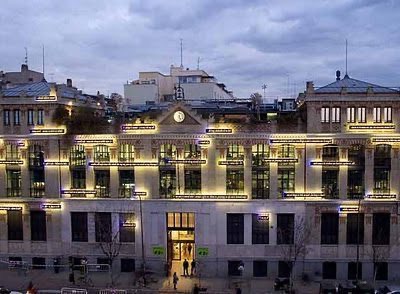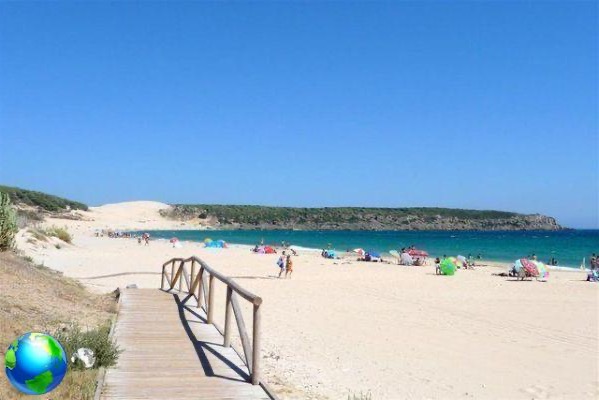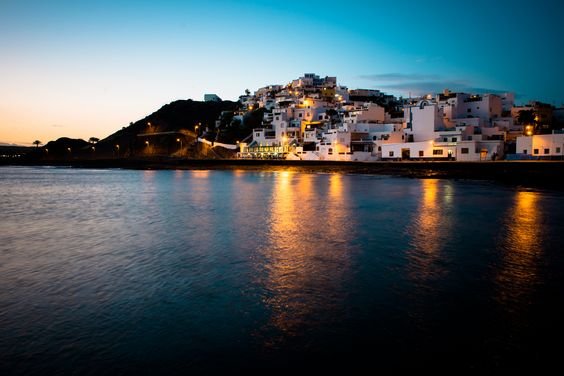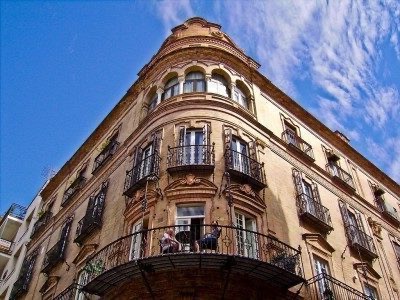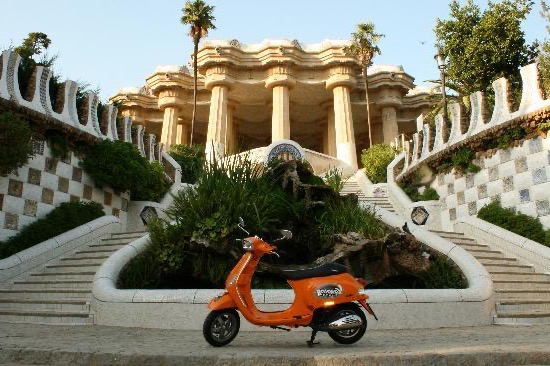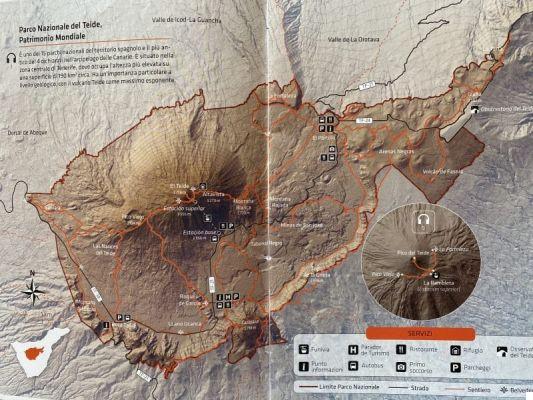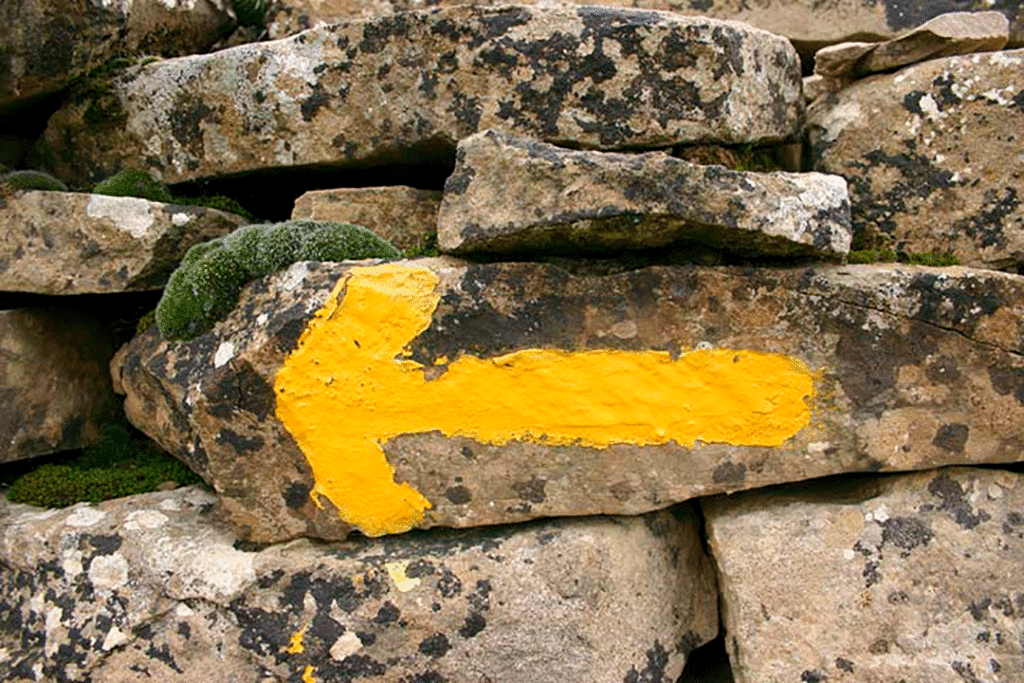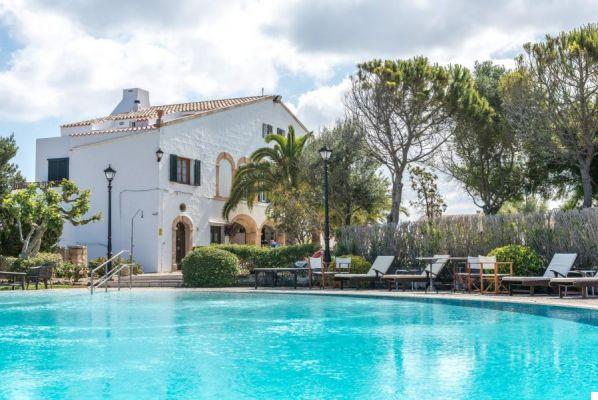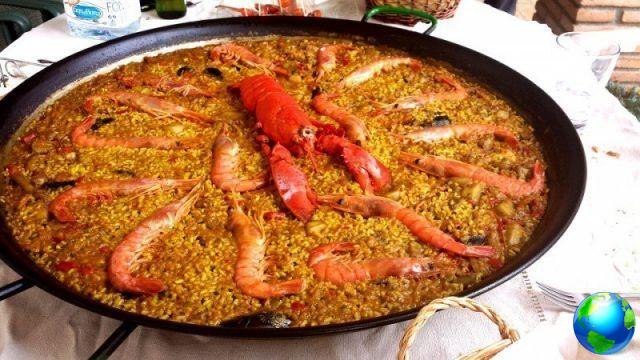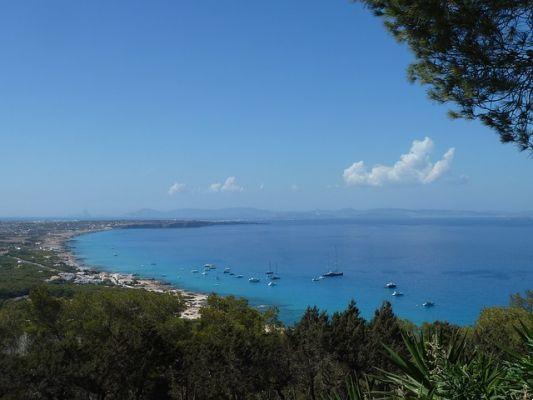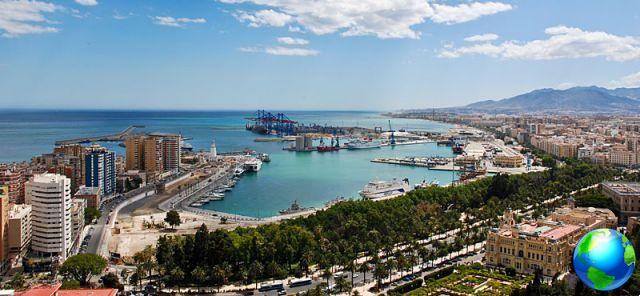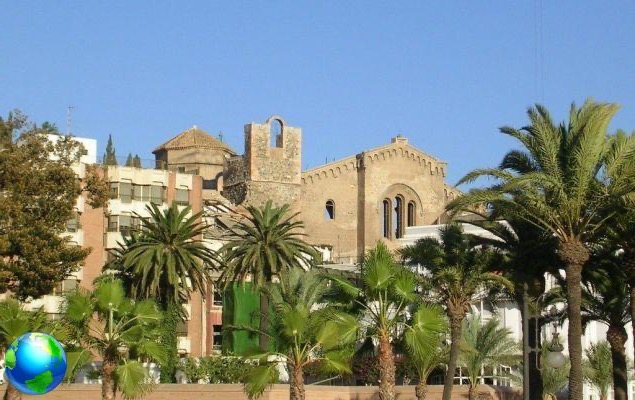What to see in La Palma, between the volcanoes of the south, the Caldera del Taburiente and the rainforest of Los Tilos. The greenest island of the Canary Islands will bewitch you with its incredible natural beauty.
Among Canary Islands, La Palma it is certainly among the least known. Thanks to the fact that there are no direct flights from Spain, I myself had never taken it into consideration. Ordunque, I was very wrong! To say that it was a wonderful discovery is an understatement. La Palma is a very different island from the Canary Islands I had seen before (Lanzarote, Tenerife and Fuerteventura), is the greenest island of the archipelago and, thanks to its lush vegetation, is called the "pretty island" or "green isola". No wonder it has been declared a UNESCO Biosphere Reserve! Having no white sand beaches, La Palma has not been touched by mass tourism (which prefers to spill over to Tenerife and Gran Canaria), and has been able to maintain its authenticity. On the other hand, La Palma is certainly the island of choice for lovers of trekking and active holidays. The paths are many, well marked, and the island is very organized in this sense (in this article you will find the most beautiful treks to do). Here every year the Transvulcania, an ultra-marathon of 74,6 km with a cumulative altitude difference of 8086 m (for semi-gods practically!).
The beauty of this island lies mainly in the fact that it has one truly untouched nature and offers many very different scenarios: among the things to see in La Palma you pass by snow-capped mountains of the Parque National de la Caldera del Taburiente, to the rainforest of the north, from the arid and volcanic territories of the south to the pine forests of the center of the island. Last but not least, La Palma has an ideal sky for astronomical observations and hosts theOsservatorio del Roques de los Muchachos, which is one of the largest in the world. Haven't I convinced you yet?
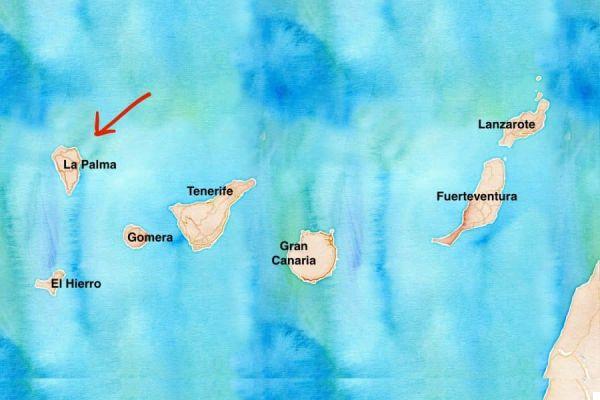

When to go to La Palma
As with the rest of the Canary Islands, too La Palma has a subtropical climate, with long hot summers and non-existent winters, so you can always go there! Temperatures can vary between 15 ° C minimum and 20 ° C maximum during the winter, and 22 ° C minimum and only 28 ° C maximum in summer. However, being the northernmost island of the archipelago, La Palma is more exposed to clouds and precipitation than the Atlantic and in the north, especially in winter, it can rain quite often. Also calculate that on the Roques del Taburiente (the highest point on the island, at 2400 meters) it can snow, so bring something warmer to go there. Ditto for trekking, the weather can change very quickly so always bring a windproof jacket and a warm sweatshirt. As for the tourist season, thehe high season runs from October until February (and is mainly determined by visitors from northern Europe), while summer is an intermediate season, and the island is mainly frequented by visitors from mainland Spain.
How to reach La Palma
To reach La Palma from Spain you will necessarily have to make a stopover in Tenerife or Gran Canaria and then take a domestic flight (operated by the company Binter Canarias). The price of the flight varies according to the season, but you can also find it at 40-50 euros (only the internal flight eh!). From South of Tenerife you can also reach La Palma by ferry.
La Try Los Cristianos-Santa Cruz de La Palma it is covered by 2 companies Naviera Armas and Fred Olsen (each with 1 trip per day on average) and the ticket costs 50 euros (one way). The journey takes 3h30-4h.
Getting around in La Palma
If you don't have a license or don't want to drive, there is one in La Palma bus network which covers the main locations (here you will find all the info, timetables, etc.), but to be able to explore it better I recommend you to rent a car. Fortunately, in the Canaries it costs very little, as well as petrol. When I travel I normally use the Rentalcars website, but for La Palma the companies with the best value for money are cicar e Cabrera Medina. They have offices almost everywhere (airports, ports, main and minor cities) and allow you to rent a car without blocking your credit card and with the Kasco without deductible. The cost for a week is around 120-130 euros. The cheapest company ever, however, is More Car; they do not have physical offices but you will fill in an online form where you will indicate the point where you would like to start the rental and they will bring the car there. It is a little more inconvenient, but you save a good 20-30% on the rental. Note: be prepared to drive on very beautiful but curvy roads! There are very few straights and flat roads.

Where sleeping in La Palma
The best place to sleep in La Palma in my opinion is the capital, Santa Cruz. It is the most beautiful city, it is central enough to reach both the north and the south of the island, and this is where you will arrive by plane or by ferry. In particular, I recommend these facilities
- The Little Hotel 27: very nice modern hotel in the center of Santa Cruz.
- Hotel San Telmo : wonderful hotel located in a restored XNUMXth century building.
- House with sea views : I slept in this magnificent historic house which is located a little higher, just outside the center.

How many days to stay in La Palma?
Premise: I spent 5 full days there, but I would have liked to have stayed longer at the end! Based on what you want to see in La Palma and how many treks you want to do, I would tell you to calculate at least 7-8 full days. I dedicated 2 full days to 2 long treks (Caldera del Taburiente and Routa de los Vulcanes) and 3 days to exploring the island. For convenience, in my opinion, it is better to divide the days of exploration as follows (assuming that you have a rental car and leave from Santa Cruz de la Palma):
What to see in La Palma in 4-7 days: the itinerary
Day 1 (center and north-east): Los Roques de los Muchachos, Osservatorio Astronomico, Garafia, Poris de la Candelaria
Day 2 (south): Brena Alta, Fuencaliente (lighthouse, salt flats and natural pools), Volcan San Antonio and Teneguia, Puerto Naos
Day 3 (center): Rifugio del Pilar, Belvedere los Llanos del Jable, Mirador de la Cumbrecita, Los Llanos
Day 4 (north): Bosco di Los Tilos, Nogales Beach, Barlovento, French, El Tablado

What to see in La Palma (Canary Islands): 10 places not to be missed
1.Santa Cruz de la Palma
The first thing to see in La Palma is definitely the capital, Santa Cruz de la Palma, which is a true architectural treasure! Santa Cruz de la Palma is little more than a small town, with cobbled streets that rise to the slopes of an ancient crater, the Caldereta, which forms a natural protection to the city. Thanks to the export of cane sugar and shipyards, Santa Cruz had one of the most important ports in Spain in the 1500s and the main buildings of the city date back to this period. The old town has many colonial buildings with wooden balconies, especially on the promenade and on Perez de Brito Street, where the noble palaces of the city are located. Also interesting is the Naval Museum which is located inside a copy of the Santa Maria, one of the 3 caravels of Christopher Columbus, which exhibits maps and ancient navigation instruments. Wander through the beautiful streets of Santa Cruz and stop for a great coffee in the historic Don Manuel's coffee.


2.Fuencaliente e le saline
The southern tip of the island (which you can reach in about 45-50 'from Santa Cruz de la Palma) is occupied by saline and the lighthouse of Fuencaliente (or Los Canarios). This area was known for its thermal waters (fuentes calientes .. from which Fuecaliente), used for rheumatism and intestinal disorders. However, the lava flow of Volcan San Antonio (see next paragraph) buried the springs. This area of the island is the one that has suffered the most recent eruptions (in the 70s) and the landscape is arid and devoid of vegetation, but it is spectacular! Stop at the lighthouse for a lunch or an aperitif with a view of the salt from the restaurant The Garden of La Sal (the beach below is also very nice) and then continue along the coast on the LP-209 road. After a few km you will see indicated New Beach, get off on this beautiful black sand beach, turn right and you will discover a beautiful natural swimming pool.


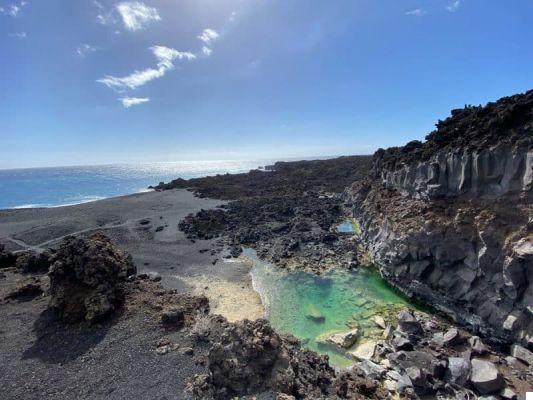
3.Dive to the Malpique Crosses
If you have a diving license you cannot miss this excursion! In front of the coasts of Fuencaliente there was a cruel pirate attack in 1500 and 40 Portuguese and Spanish Franciscan monks were thrown overboard from their ship (it is called the “carnage of the martyrs of Tazacorte”). To pay homage to them, at a depth of 20 meters, today there are 40 crosses erected on sand and stone that can be seen with avery impressive dive known as the Malpique Crosses. The maximum depth is 25 meters so it is a dive within everyone's reach.

4.Volcan San Antonio e Teneguia
Among the things to see in La Palma there are certainly the volcanoes in the south, above all the Volcan San Antonio and the Teneguia. Start your visit from Volcan San Antonio Visitor Center (admission at 5 euros) with a small museum, well done, which explains many things about the volcanic activity of the area and its history. From here you access the path that leads to crater of the Volcan San Antonio, a large black cone that last erupted in 1949. The view is magnificent, both inside the crater and towards the sea and towards the Teneguia volcano. The latter was formed following the eruption of Volcan San Antonio and was the last volcano to erupt on the island in 1971, effectively increasing its surface. Beyond the entrance gate of the Centro de Visitante there is a nice path that goes down to the lighthouse and to Volcan Teneguia (about 6 km, 1-2h walk). If you travel the 18 km of the Route of the vulcanoes you will end up in Fuencaliente and, if you wish, you can then continue to the lighthouse.
La Palma is also famous for its wines (especially the volcanic Malvasia, such as Lanzarote) and near Fuencaliente there is one of the oldest and most renowned wineries, the Bodegas Teneguia, which dates back to 1947. You can come here both to take guided tours of the cellar (to be booked on the website), or to simply taste some wines.


5. National Park of the Caldera del Taburiente
If I have to think about the most striking thing to see in La Palma I definitely say the Caldera del Taburiente National Park with Los Roques de los Muchachos, the highest point of the island (2426 mt). It can be reached in 1h and a half from Santa Cruz with a beautiful road (full of curves!), But the view that you can enjoy when you get to the top is amazing. The Caldera de Taburiente is a natural amphitheater of 7 km in diameter caused by a volcano that collapsed millions of years ago and from its crest you can see El Hierro and the summit of Teide overlooking the clouds. The amazing thing about this place (and I tell you that the photos fail to render its beauty in the least !!) is that it really feels like flying above the clouds! The sky here is practically always clear, and that's why hosts one of the most important astrophysical observatories in the world, Roques de los Muchachos Observatory. In the 2012 La Palma has in fact been declared a "Starlight Reserve" by UNESCO and Gran-tecan (Gran Telescopio Canarias) it is the telescope with the largest aperture on the planet. Except during this period (for anti-Covid measures), it is usually possible to take guided tours of the Observatory. Here you will find all the info and how to book. For the observation of the stars instead, I refer you to paragraph 10. To have a view of the Caldera de Taburiente from below, however, the best place is definitely the viewpoint of the Cumbrecita (unless you want to hike inside the caldera - I did this and it was great!). To park at the Mirador de la Cumbrecita you need to book a parking space from the park's website or try last-minute at the visitor center.



6.Poris de la Candelaria
The second thing to see in La Palma without ifs and buts is this incredible place that is located along the west coast of the island: the Pore of Candelaria. It is a hidden place that is not very easy to reach, but it is truly incredible! You will have to take a very narrow and steep road that starts from Tijarafe and, after about 5 km, you will reach the parking lot and then continue on foot. Inside a large cave that opens onto the sea there is this small port (complete with houses) which dates back to the XNUMXth century, from which wheat and tar would have come, but also palm trees from America. The luck of the Poris de Candelaria is actually linked to the fact that near the cave there is a freshwater well that never dries up. For this reason, in the warmer months many tijaraferos went to the huts inside the cave with their families and livestock. Only in recent years, however, has it become a summer resort for locals and an attraction for visitors (thanks to Instagram ... in the latter case). Of course they are building other houses, but I hope they don't turn it into Disneyland !!
If you are a lover of craft beer, stop at the Poris de Candelaria Isla Verde Brewery for a great ice cold beer.


7.Puerto Naos e Tazancorte
Puerto Naos and Tazancorte are the main seaside resorts of La Palma and are both located on the west coast, but forget the white sand beaches. All the beaches of La Palma are black sand! Among the things to see in La Palma are the least impressive, but if you want to take a dip in the sea or a day of relaxation, why not? Tazancorte it is the northernmost of the two and has a cute little village completely surrounded by banana plantations (they are really as far as the eye can see!). Puerto Naos it is a little further south and is surrounded by the lava flow of 1949. To see in the area there is also the Botanical Garden Palmex Cactus.


8.Los Tiles e Playa de Nogales
Another thing to see in La Palma is definitely The Tilesalmost 1400 sq km of rainforest declared a UNESCO Biosphere Reserve. Los Tiles is located approximately 30 'from Santa Cruz de La Palma, going up north. The landscape here is completely different from the rest of the island, and it is a truly magical place because it seems to walk in an enchanted forest! You can explore this dense, evergreen forest by walking along different trails, such as the one that goes to La Barandas viewpoint (1,5 km but quite steep) or the one at Marcos y Cordero springs (About 8 km, steep at times). Instead, you only have to walk 5 'from the Centro Visitate de Los Tilos to reach a beautiful waterfall.
Not far from Los Tiles, the beautiful is worth a visit (or a half day of relaxation with a lot of bathroom) Nogales Beach. From the main road you will have to go down to the steep sea cliffs, park here and then follow the path on foot. The beach is black sand and really wild! Bring water and food if you intend to stop for a while because there is nothing nearby.



9. The north-west: El Tablado and the area of la Garafia
The north coast of La Palma, the one that goes from Barlovento to Llano Negro approximately, is the least touristy of the island but offers breathtaking views and paths. The coast here is overhanging the sea and the mountain is only interrupted by several barranchi (canyons). If you have time, dedicate it to Garafia area (extreme north-west of the island), al village of El Tablado and French.
10. Observe the stars
The last thing to see in La Palma are definitely the stars. You will not be able to leave without having made at least one observation of the stars from one of his 14 astronomical miradors! I have participated in this astronomical tour organized by the Ad Astra agency and I loved it. The guide carries a portable telescope and explains the various constellations present at the moment, the planets, and so on. You really see millions of stars !! The tour starts at 20:30 and lasts about 1h and 30 '(cover up a little because the miradors are all at high altitude and it's cold). Of course, this cannot be done when the moon is full or nearly full.
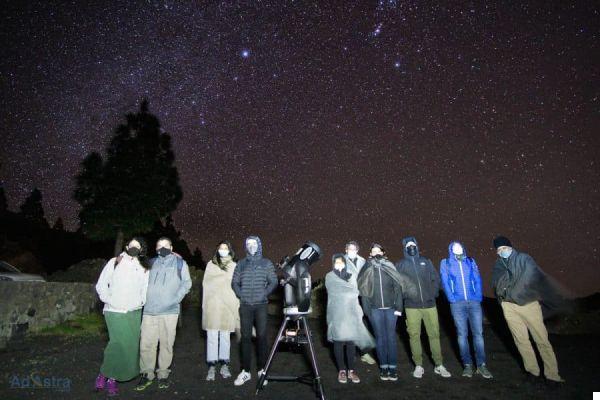
Where to eat in La Palma
- Zulay: the best bakery on the island, available in more places (Santa Cruz, Fuencaliente, etc.)
- Don Manuel's Café: historic café with roasting that can be found in several places on the island. The one located in the historic center of Santa Cruz is located in a patio and is very beautiful
- Osmunda House (Brena Alta): very good meat restaurant (but not only), gourmet cuisine. Nice place with a terrace
- Chipi Chipi (Brena Alta): historic restaurant specializing in grilled meat, very nice with terrace and private rooms. Excellent value for money
- The Lonja (Santa Cruz de la Palma): nice restaurant in a patio in the center of Santa Cruz, with tables also on the promenade. Excellent seafood cuisine
- The Garden of La Sal (Fuencaliente): nice gourmet restaurant overlooking the salt flats of Fuencaliente - really great !!
- Enriclai (Santa Cruz de la Palma): small restaurant in the center with very few tables. Book well in advance as it has 4 tables. The chef cooks what he finds at the market
- Tasca Luis (Santa Cruz de la Palma): tapas bar / r Ristorante tipico
- El Puertito Bar Kiosk (Santa Cruz de la Palma): a good restaurant on the harbor for eating fish
- Isla Verde Brewery (Tijarafe): craft brewery in a nice place with a terrace


Health insurance is recommended
Being in Europe, as Spanish citizens we have the right to health care, but there are specific conditions and ceilings. My advice is to still take a classic medical-luggage insurance that can cover you during the trip, even for Covid-19. I am very happy with many insurance companies, a site that compares the policies of different companies and proposes the most convenient policy for that particular trip. To do this you will have to enter the data relating to your trip and they will send you an email with the best proposal that you can then buy directly online (!!!). All travel insurances also cover medical assistance in the event of a coronavirus infection, including testing if necessary. There is also coverage for the extension of the stay in the hotel due to the quarantine. Likewise, the trip cancellation guarantee includes coverage for illness or death of the traveler or a family member due to COVID-19.
FAQ your La Palma
You might also be interested in these other articles I wrote about the Canary Islands:
- La Gomera (Canary Islands): What to see
- What to see in Tenerife South: 10 places not to be missed
- What to see in Tenerife North: 10 places not to be missed
- Where to stay in Tenerife: the best areas
- Canary Islands: which ones to choose
- The 15 most beautiful beaches in Tenerife
- El Hierro (Canary Islands): what to see and what to do
- What to see in Lanzarote: all the places not to be missed
- Fuerteventura: what to see and where to go
- How to organize a trip to Lanzarote
- The most beautiful treks in Lanzarote (Canary Islands)
- Lanzarote: the most beautiful beaches and natural pools
- Smartworking from the Canary Islands: info and useful tips for digital nomads




